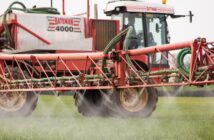Take-all is noted as one of the main problems faced by arable growers, and this year high incidences of the disease have been reported in first wheats as well as second. Therefore, growers must stay vigilant and be proactive, ahead of autumn.
“As the take-all pathogen is active in the soil down to 10 degrees, the mild autumn this growing season has been a contributing factor to the increase in the amount of primary infection in first wheats,” explains Jonathan Blake, ADAS Principle Research Scientist.
“When this occurs, it can go undetected if rain throughout the rest of the season ensures water uptake is not limited.
“But with the dry conditions experienced at grain fill this year, this has left first wheat crops open to the effects of take-all, and even low-level root damage has impacted on water uptake and crop growth,” says Mr Blake.
“Additionally, in second wheat crops where take-all is known to be a concern, many growers will have attempted to offset these effects with an early nitrogen application to help roots grow away from the pathogen. But, this year the nitrogen uptake was slow, due to the lack of rain, which would have limited the benefits of this cultural control measure.”
Mr Blake adds that, growers are generally aware of the risk factors associated with take-all infection, but one thing that is not commonly known is the importance of controlling host volunteers in break crops.
“If break crops are not kept free of volunteers, then they will act as a host for the take-all pathogen, and carry take-all inoculum over into the next season.
“It’s important that growers realise that once take-all symptoms are evident in a crop there is nothing that can be done to reclaim yields. Therefore, having a proactive control strategy in place, is the best way to protect crops and profits.
“The most effective ways in which to achieve this is by rotation. But, where the decision has been taken to grow second wheats, drawing on all the known solutions including using a seed treatment such as Latitude (silthiofam), observing a late sowing date where possible and earlier timing of spring nitrogen applications are recommended,” says Mr Blake.




